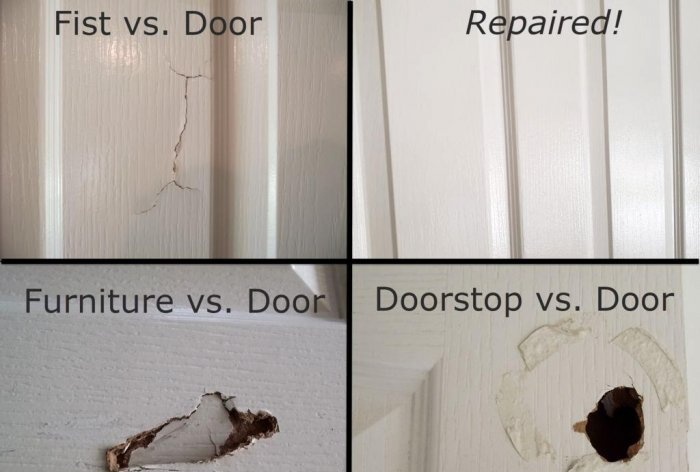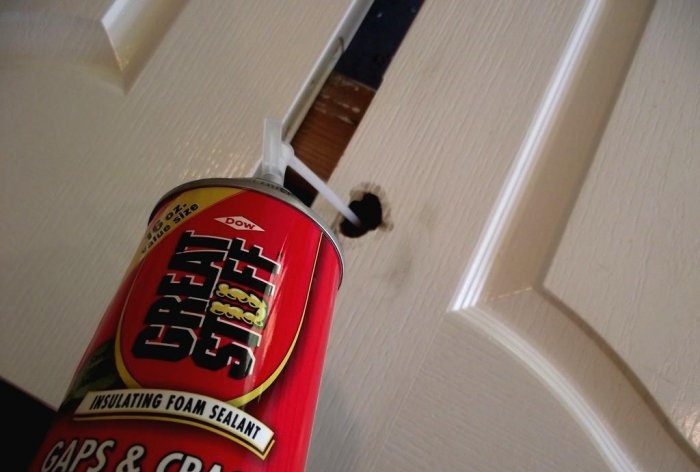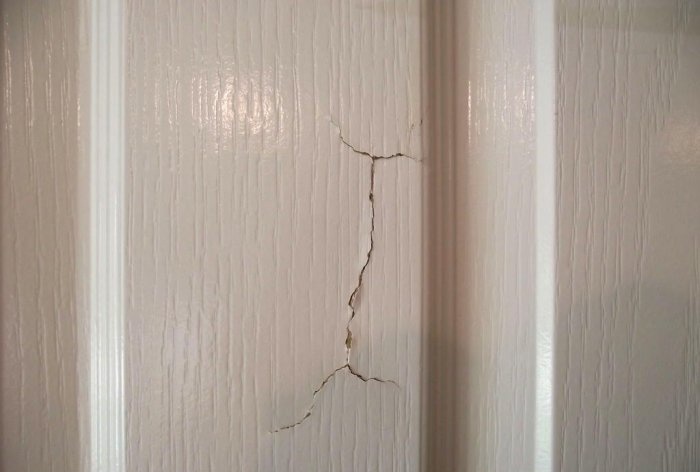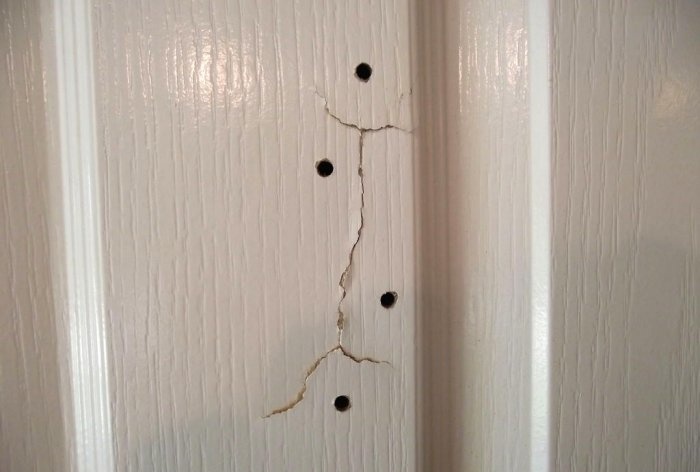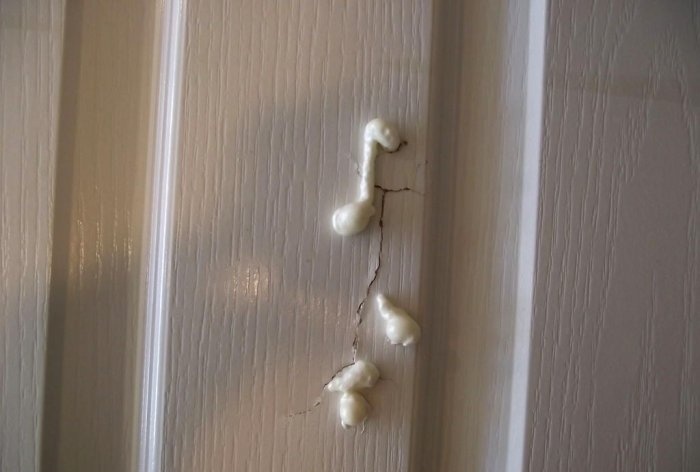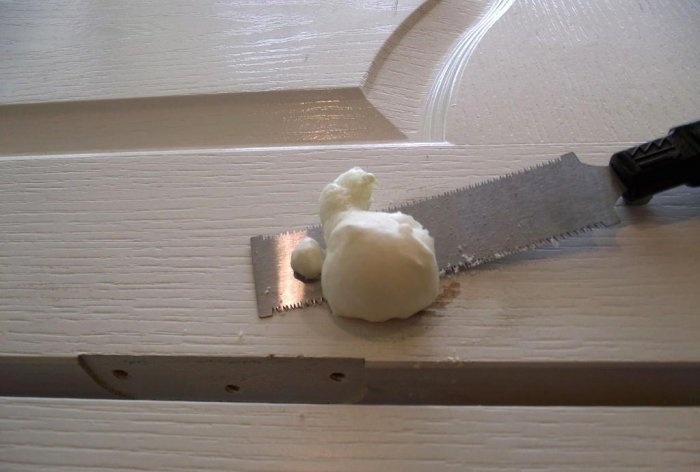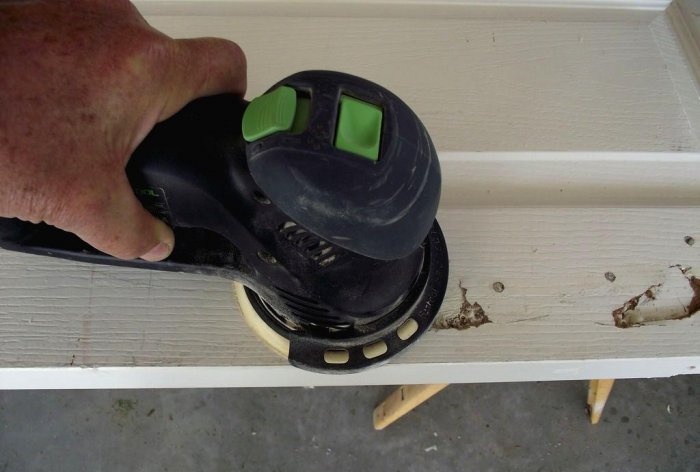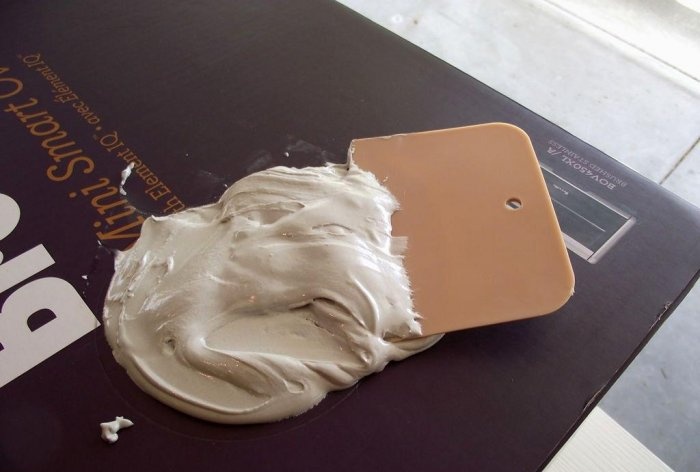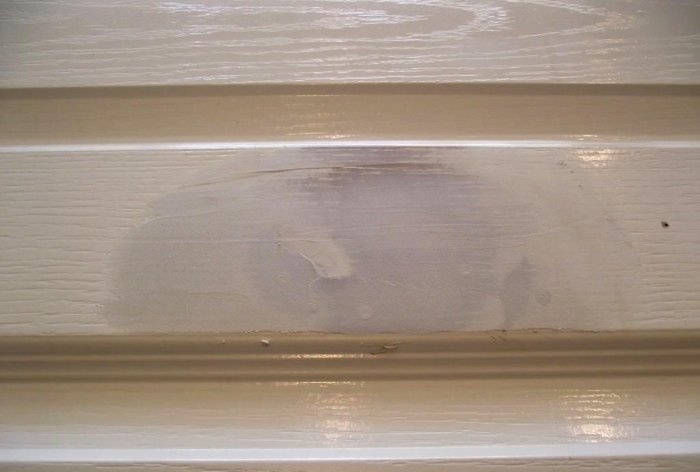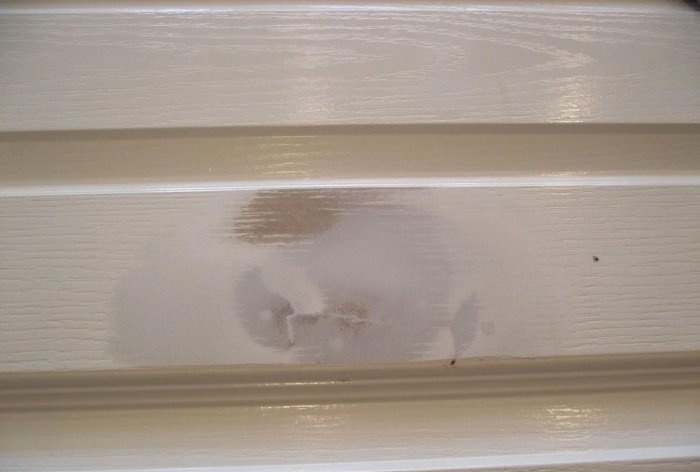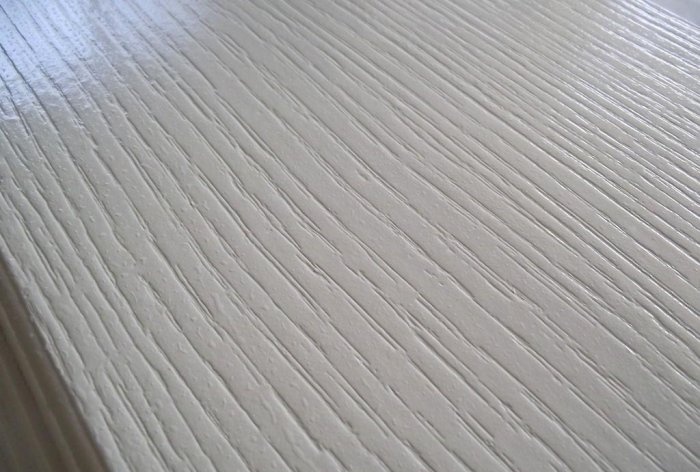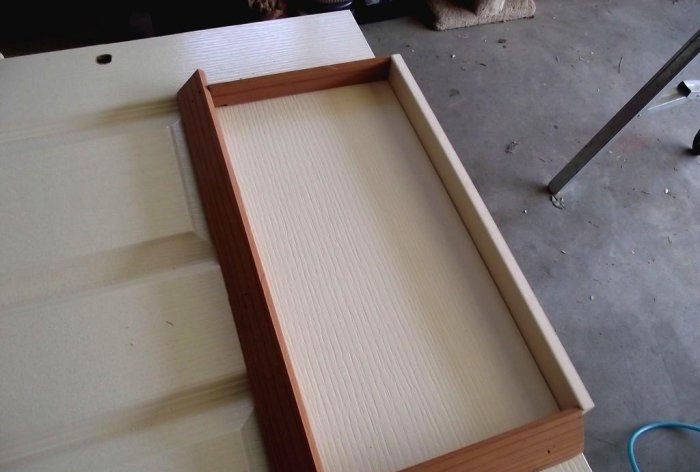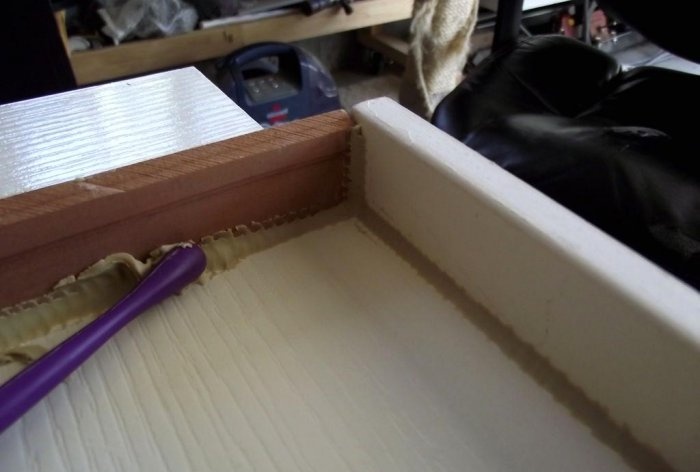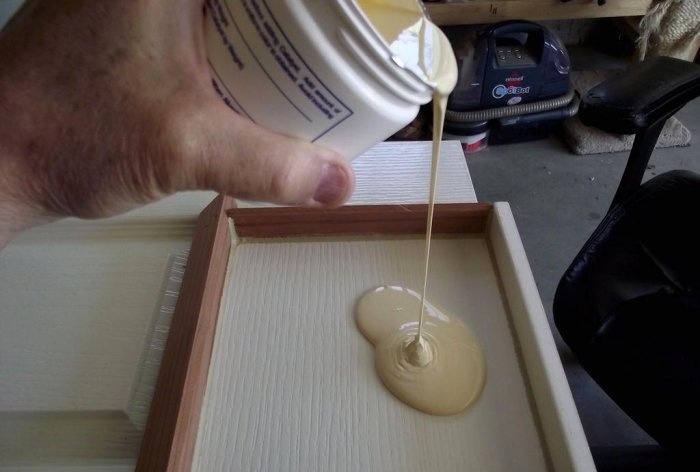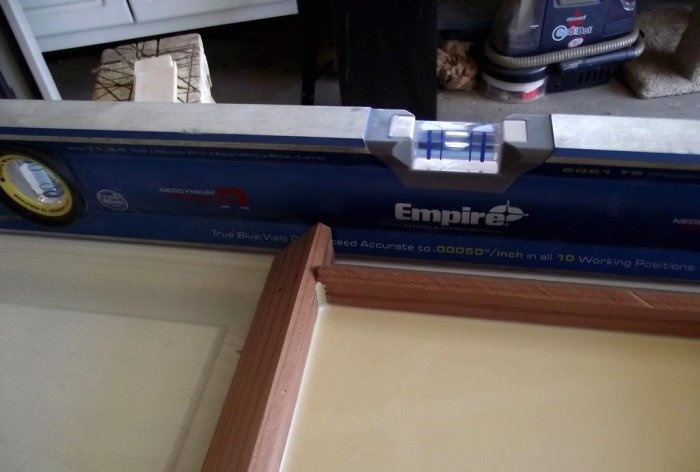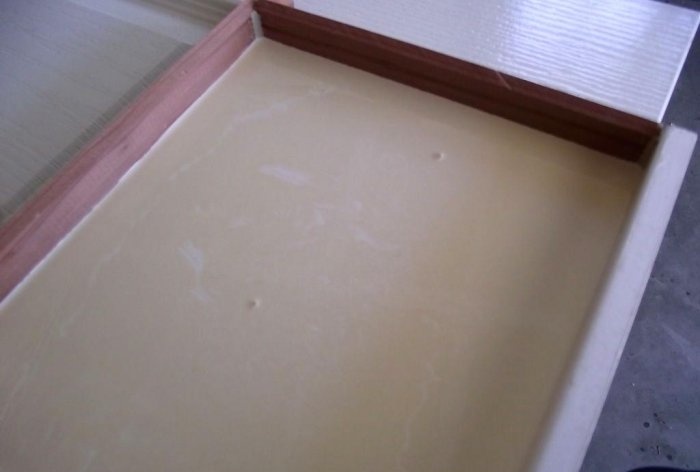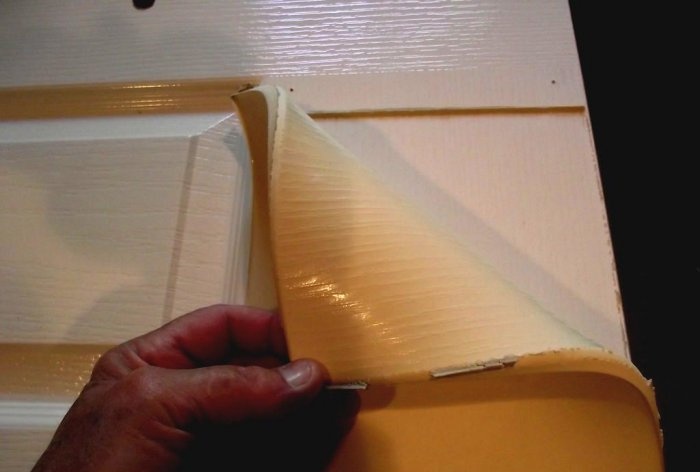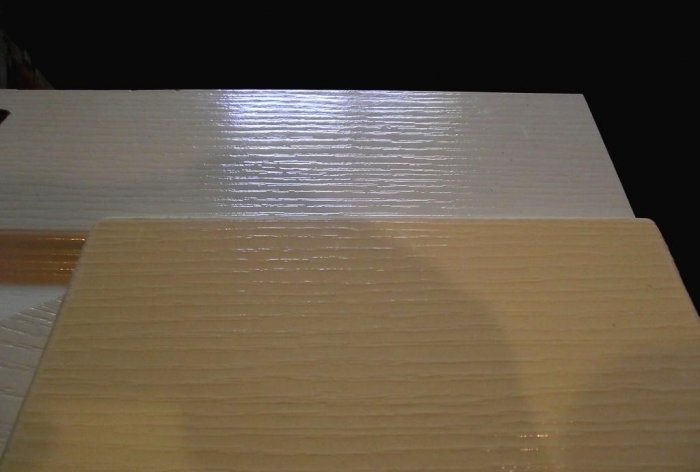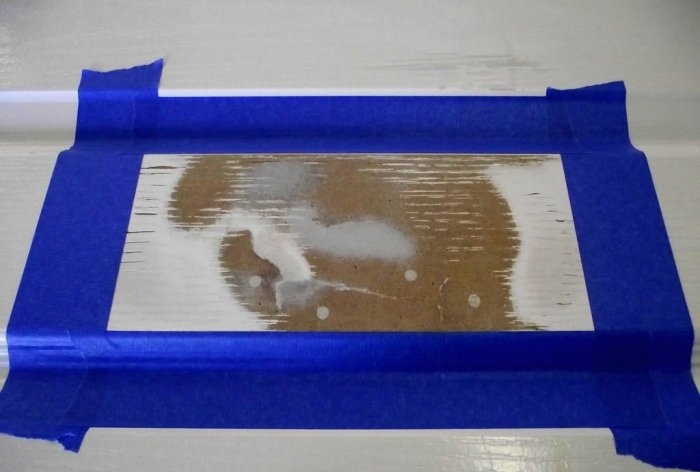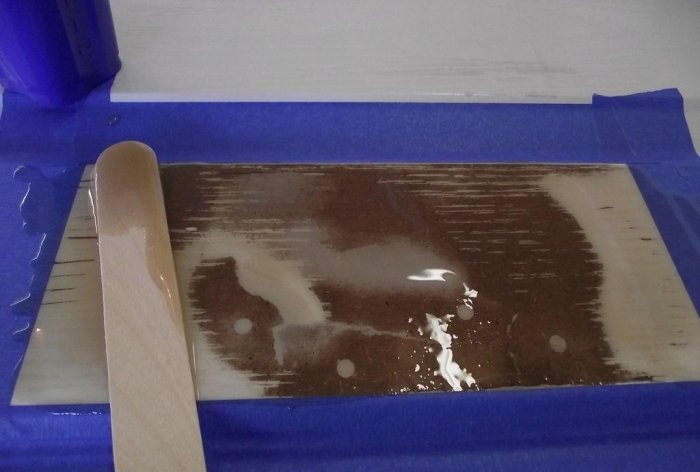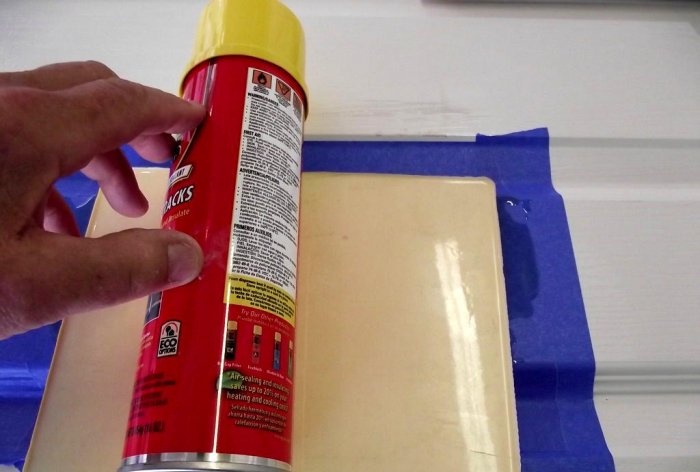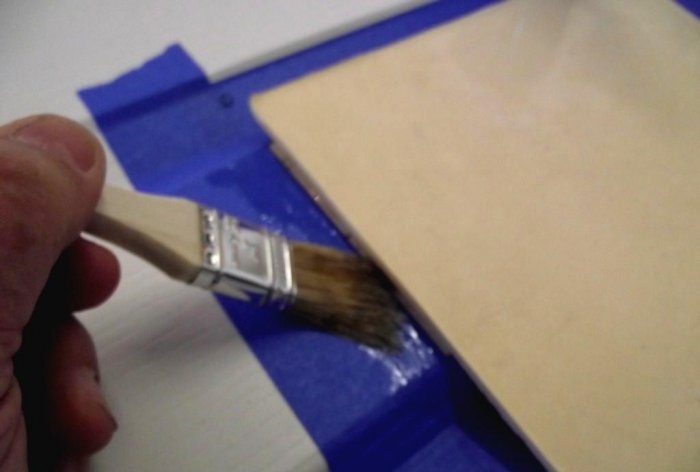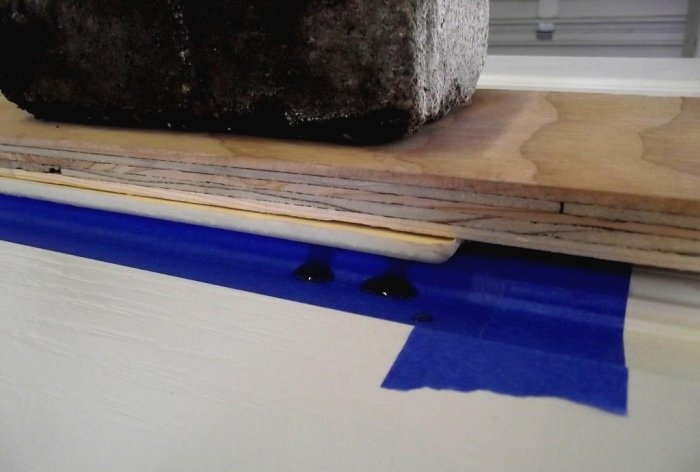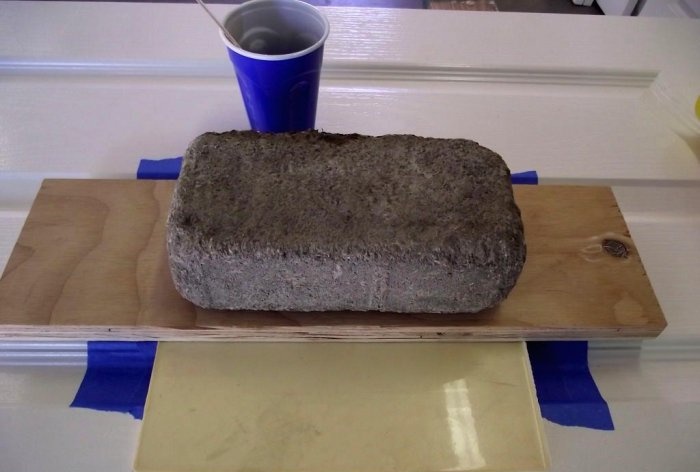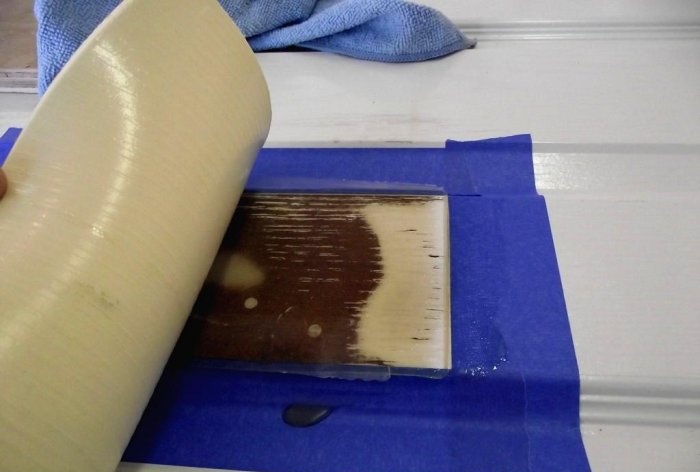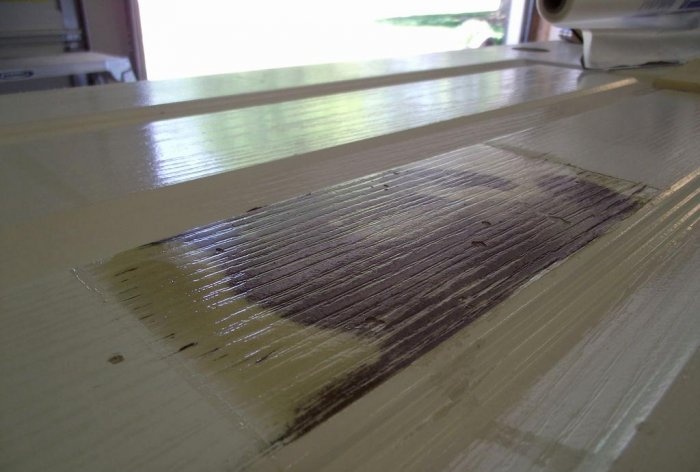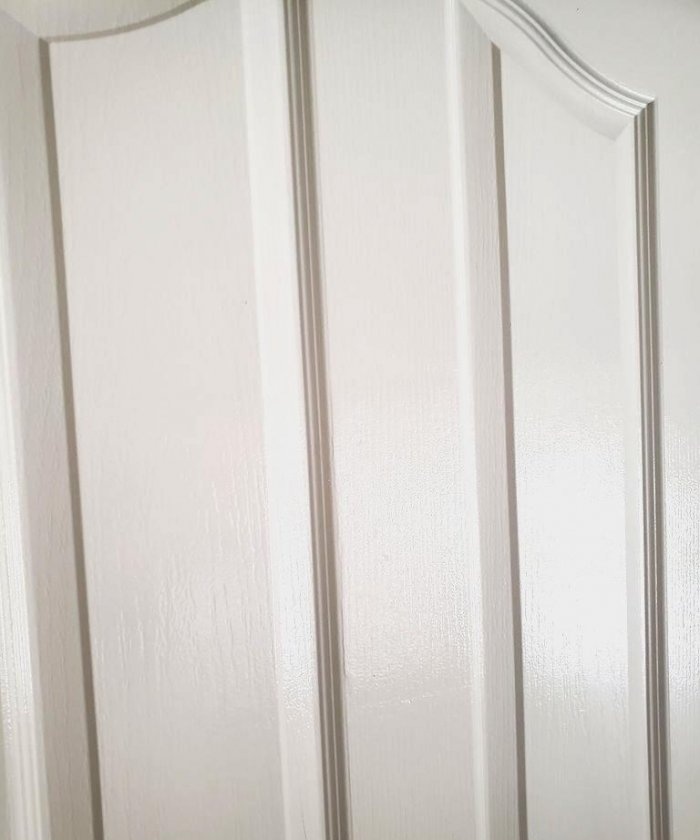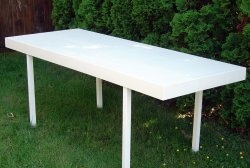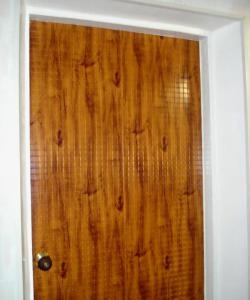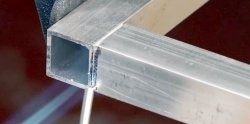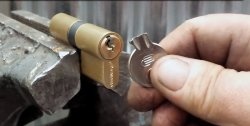How to repair a hole in an interior door
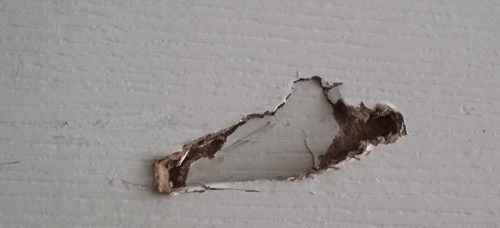
Hollow interior doors require more careful handling, due to their lightweight design, compared to solid ones. Well, if you didn’t protect such a door from being hit, say, when you moved it furniture, then a good dent or even a hole will certainly appear in it. Of course, you can buy a new one, they are not that expensive, but in any case it is much cheaper to fix it yourself.
Repair of a hollow door with restoration of the pattern
So, all repairs and restoration of a hollow door can be divided into five main stages:
- Filling the voids under the dent with polyurethane foam to give strength to the area for further processing.
- Surface putty.
- Making a stencil with the original design of a tree.
- Restoring the pattern on the door surface.
- Painting.
So, we remove the door from its hinges. Place it on stools or another flat surface, with the damaged part facing up.
Filling the voids with polyurethane foam
To fix the dent and fill the holes, we will use universal mounting foam, which is used in construction and repair.
If the hole does not have open cracks or holes, then you need to make them yourself, using a drill and a screwdriver.
Take the diameter of the drill slightly larger than the tube of the foam bottle.
Filling the space under the crack.
Let the foam harden. This usually takes a day.
After hardening, cut off the foam sticking out of the holes and cracks flush.
We sand, removing paint from the area to be restored, making it smooth and even.
We putty the surface
When the surface is prepared, we move on to the putty, having previously primed the application area.
There are special requirements for the putty; it must be epoxy-based so that the surface being restored is durable. It’s not difficult to buy or prepare it yourself.
We use a rubber spatula.
We putty, filling all the unevenness and potholes.
It may be necessary to apply several coats to achieve the desired result.
We leave it to dry and move on to the next stage.
Making a mold with a pattern
We find on the same door an area of similar size with a good texture of the pattern.
We gnaw it with slats.
And in order to secure everything and seal a kind of bath, we coat it with plasticine, clay or other plastic material.
Pour liquid rubber (or silicone rubber) into the resulting bath. Please note that the door must lie very level.
Distribute evenly over all surfaces. It is not necessary to make a very thick layer, about 5-7 mm.
Leave and wait for it to harden. The time can be found in the instructions for use.
When the time has come, remove the sides and peel off the layer from the door.
The result should be a clear shape on a piece of rubber.
Restoring the wood grain on the door
We make a border, about a millimeter thick, around the damaged area.
We take epoxy-based glue and mix the components. Apply the required amount to the area inside the frame.
We put the pattern protector on top and roll it a little with a foam balloon.
Remove excess glue with a brush.
Press the stencil against the door and leave to dry.
Once the glue dries, peel off the stencil.
The surface is almost ready.
Painting an interior door
At the end of the job, you need to paint the entire door. The paint will smooth out minor irregularities and transitions.
Original article in English
Similar master classes
Particularly interesting
Comments (1)

